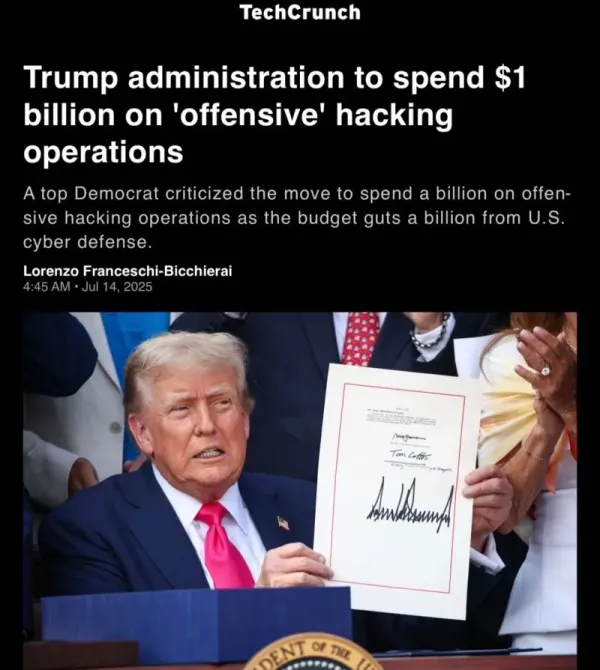Beyond Compliance: The Evolving Art of ERM and Key Risk Indicators for CISOs

As Chief Information Security Officers (CISOs), we constantly navigate a complex landscape of evolving threats, regulatory demands, and technological advancements. It's no longer enough to react to incidents; proactive risk management is paramount. This is where a mature Enterprise Risk Management (ERM) process, supported by robust Key Risk Indicators (KRIs), becomes an indispensable tool. Drawing insights from recent case studies of diverse organizations, we can explore how ERM evolves and matures, offering valuable lessons for strengthening our cybersecurity posture.

The Foundation: Establishing a Structured ERM Framework
The journey to ERM maturity often begins with formalizing an approach to managing risks across the entire organization, moving away from fragmented or informal methods. Midwestern Utilities, Inc. (The Company), for instance, initiated a formal ERM program after the Sarbanes-Oxley Act of 2002, highlighting a shift towards a more structured, enterprise-wide strategy for managing risks. This involved appointing an ERM director who consulted with other companies for best practices, engaging senior leadership, and designating risk owners for each department who collectively formed a corporate risk committee.
Similarly, Discovery Health Group (DHG) began its ERM function in 2008, gradually gaining acceptance across all organizational levels. DHG emphasizes a formal ERM Framework that connects a broad risk strategy to individual risk objectives across the organization, clearly defining roles for Risk Governance, Risk Oversight, Risk Infrastructure, and Risk Management/Ownership. These foundational steps underscore the importance of a clear structure, assigned responsibilities, and top-down commitment to effective risk management.

Developing Actionable Key Risk Indicators (KRIs)
KRIs are critical metrics designed to provide an early signal of increasing risk exposure. Their development signifies a crucial step in ERM maturity, moving beyond mere identification to proactive monitoring.
- Midwestern Utilities' Bowtie Analysis: The Company began developing KRIs as its ERM function matured and integrated more with operations, aiming for metrics that would alert management to increasing risk exposures. They adopted a "bowtie analysis" technique, which starts with the risk, identifies root causes (events or circumstances that may cause the risk event), and then identifies preventive measures. The root causes become the focus for KRI development, with the goal of identifying metrics that track those causes. This structured approach, involving risk owners and subject matter experts, helps to thoroughly vet each risk and its drivers. For CISOs, applying a bowtie analysis to cyber risks can pinpoint the underlying vulnerabilities or actions that lead to incidents, allowing for the development of KRIs that track those specific precursors. For example, tracking misconfigurations (a root cause) rather than just incident counts (a consequence).
- Beyond Pure Numbers: The ERM director at Midwestern Utilities found that effective KRIs should "look at metrics in different ways," including those not easily measured by numbers, as some effective predictors are qualitative. This highlights the need for a holistic approach, where quantitative metrics (e.g., number of unpatched critical vulnerabilities, phishing click-through rate) are complemented by qualitative insights (e.g., employee cybersecurity awareness sentiment, internal audit observations on control effectiveness).
- Thresholds and Weighting: Midwestern Utilities worked with risk owners and the finance department to set three-color thresholds (red, yellow, green) for each KRI, representing acceptable, cautionary, and action-required levels, respectively. Subject matter experts then assigned weights (high, medium, low) to each KRI, reflecting its proportional impact on the likelihood of the risk occurring. This systematic approach allows for nuanced risk monitoring, where the impact of a KRI hitting a "red" threshold can be understood in the context of its overall influence on a specific risk. For a CISO, this could mean assigning a high weight to a KRI tracking critical vulnerabilities on internet-facing systems, and a lower weight to a KRI tracking non-critical patches on internal workstations.
The Evolution of KRI Philosophy: From Mechanical to Proactive
Wimbledon Investments (WI) showcases a highly mature ERM process, having used KRIs for several years. Their experience provides a key insight into KRI evolution:
- Moving Beyond Mechanical Triggers: Initially, WI established mechanical trigger levels for KRIs with defined action plans. However, they "realized that this process was too mechanical and automated". This self-reflection led to a more proactive approach, where the goal became to show continuous monitoring before any metric was triggered. Negative trends are now discussed at regular risk review meetings before escalating to a trigger point, incorporating qualitative measures and ongoing risk oversight. This is crucial for CISOs, as complex cyber threats often require qualitative judgment and early intervention based on trends, not just hard thresholds. A CISO might track unusual network traffic patterns or repeated failed login attempts as qualitative indicators, initiating investigations before a full-blown breach occurs.
- Root-Cause Analysis for Uncontrollable Risks: WI's KRIs are particularly effective for uncontrollable risks, such as macroeconomic shifts. The company "strives to get as far down as it can to the root-cause event" to identify leading indicators. For example, they linked declining oil prices to potential increases in unemployment, which would affect borrowers' capacity to pay mortgages. While these examples are financial, the principle is highly transferable: CISOs must identify external factors (e.g., geopolitical tensions, new zero-day vulnerabilities, supply chain disruptions) that are beyond direct control but can significantly impact cybersecurity risk, and develop KRIs to monitor their leading indicators.
Monitoring, Reporting, and Continuous Improvement
Effective ERM relies on continuous monitoring and clear reporting to senior leadership.
- Continuous Monitoring and Communication: At Midwestern Utilities, risk owners are responsible for continuously gathering metrics for each KRI and maintaining open communication with senior officers regarding risk management, mitigation strategies, and future plans.
- Dashboards for Senior Leadership: Quarterly KRI summary dashboards are compiled for senior officers, providing a high-level overview of each risk and the current status of KRIs. These dashboards compare current measurements against previous periods, highlighting trends and triggering discussions between senior officers and risk owners. This robust reporting ensures that senior executives are actively engaged and can influence mitigation strategies. For a CISO, this translates to clear, concise cyber risk dashboards that communicate the current state of key cyber KRIs, their trends, and the effectiveness of security controls to the executive team and board.
- The "Check Engine Light" Analogy: The sources aptly compare KRIs to a "check engine" light on a car – an early warning system that signals a problem needs attention. This analogy effectively conveys the proactive nature and value of KRIs in risk management.
Key Takeaways for CISOs
The case studies collectively demonstrate that while all three companies have formal ERM processes and use analytical data, their approaches to KRI development vary, illustrating a spectrum of maturity. For CISOs, these insights offer practical guidance:
- ERM Maturity is a Journey: DHG's journey, where its ERM has "gradually gained greater acceptance" and is "still working to develop formal KRIs" that provide leading indicators, shows that ERM is a continuous process of growth and institutionalization. CISOs should embrace this iterative approach.
- Build a Strong Foundation First: "An organization needs to have a good understanding of the risks it faces before it can begin developing metrics to track those risks". This means establishing clear governance, identifying critical assets, and understanding your threat landscape before trying to implement complex KRI programs.
- Tailor KRI Development: "Each company has taken a slightly different path in the development of key risk indicators, tailoring the approach to fit the needs and capabilities of each organization". Your cybersecurity KRIs should be specific to your organization's unique risk profile, industry, and strategic objectives.
- Value Both Quantitative and Qualitative Insights: While formal, quantifiable KRIs are the goal, "qualitative statements" and "gut feeling" insights from risk leads can provide valuable early warnings, serving as a "stepping stone towards developing more formal, quantifiable KRI measures". Don't dismiss qualitative observations from your security teams.
- Focus on Leading and Root Cause Indicators: The emphasis on root causes in bowtie analysis and the shift towards identifying leading indicators for uncontrollable risks are crucial. For CISOs, this means focusing on indicators that predict future cybersecurity events, not just those that report past incidents.
- Actively Engage Senior Leadership: The robust reporting mechanisms and discussions triggered by KRI dashboards at Midwestern Utilities highlight the importance of engaging senior executives. Your KRI reports should be actionable and drive strategic conversations about cybersecurity risk appetite and mitigation strategies.
By applying these lessons, CISOs can mature their ERM processes, harness the power of KRIs, and move their organizations beyond mere compliance to a truly proactive and resilient cybersecurity posture.







